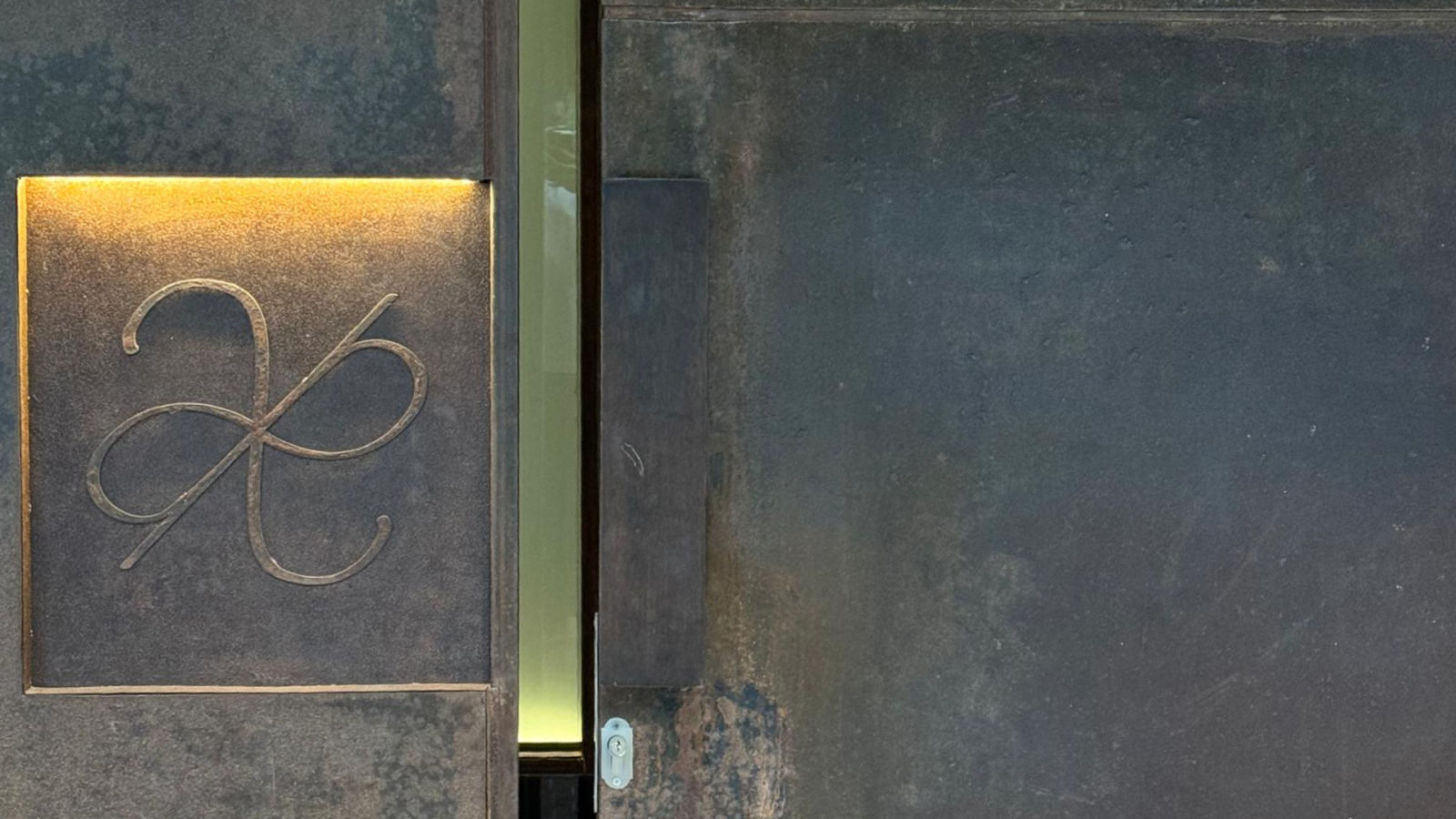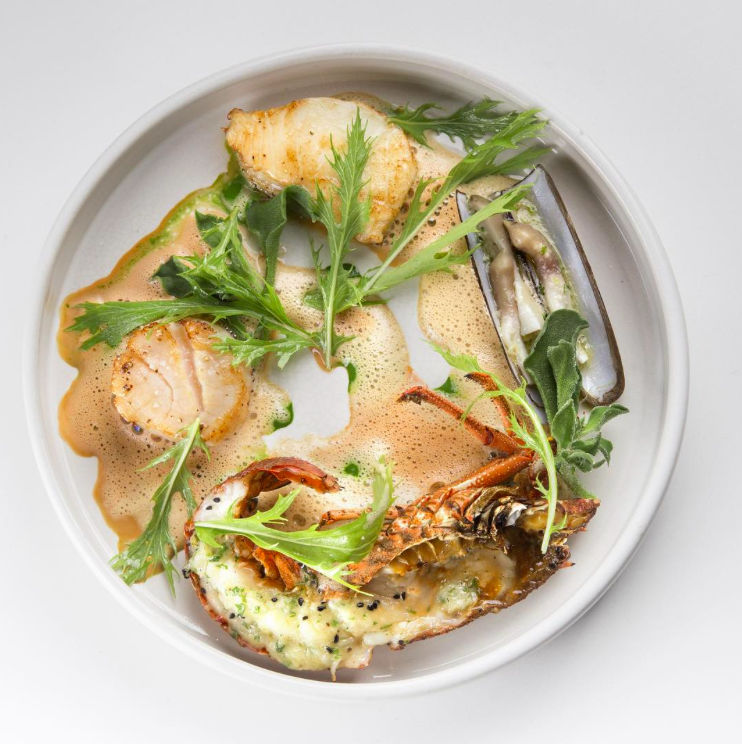Akar Dining may scrape stratospheric heights in ambition, but at no point does the restaurant lose sight of its roots. While occupying a freshly revised space in their original TTDI outpost, the accompanying Mekar menu continues to take after tradition in portraying a vivid tapestry of Malaysian flavours elevated by exceptional French technique.
Ingredients indigenous to local shores tend rarely to emerge on the gastronomic world stage, a fact that Chef-Proprietor Aidan Low is keenly aware of. Often dismissed for their humdrum qualities or exceedingly exotic novelty, the challenge comes in finding a complementing composition that best showcases these bounties at their finest, without taking away from a dish’s inherent balance.
Akar Dining breaks new ground with a freshly renovated space
It is in this niche that his restaurant, Akar Dining, thrives with great verve. Debuting in 2020, Malaysian gourmands will remember the ripples that it left in its wake by merit of the team’s inimitable ability to translate unexpected innovation through a comforting echo of familiarity in their dishes. That premise serves as the foundation upon which their newly renovated abode takes form, as indicated by the looming sliding door out front which recalls the very same portal that had once ushered intrepid diners four years prior.
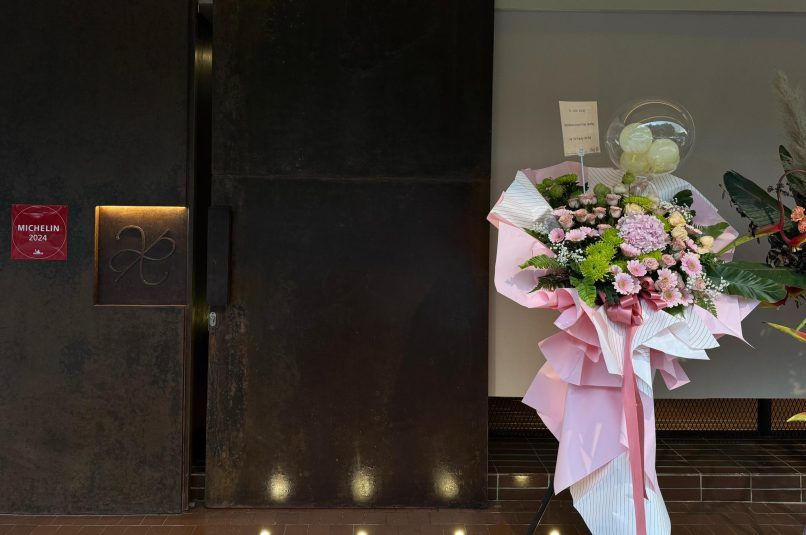
Step past the threshold and the changes could not possibly be any more dramatic. A horizontal corridor with a bench spanning its length serves as a waiting room. Aptly dubbed Rumah Anjung, you are invited to relish in a meticulously crafted ambiance that while wholly contemporary in its execution, retains hallmarks of shared Malaysian pasts that can prove elusive at first glance.
Pay closer attention and they will reveal themselves in due time, such as the chevron mosaic tiles that harken back to ubiquitous terraced homes from the 1970s and 1980s that have raised generations of Malaysians, including Low himself.
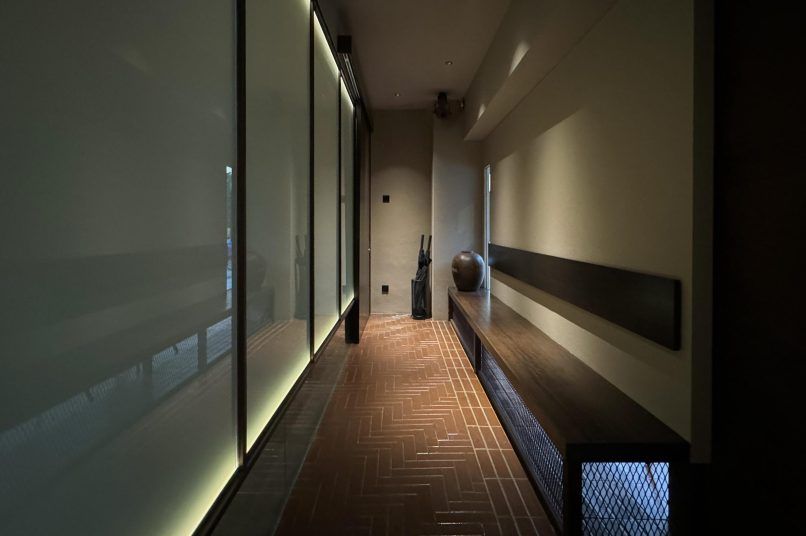
On the other hand, a mesh-wire vent that brings in daylight can be found right underneath the concrete bench, connecting the bustle of the greater world beyond the restaurant’s boundaries with its muted interior. One can’t help but admire how it evokes the breezy insouciance of elevated traditional Malaysian houses found along the country’s pastoral coasts, where conversations can be heard if one were to duck underneath its stilts. Chat at your leisure, but speak in hushed tones to avoid eavesdroppers.
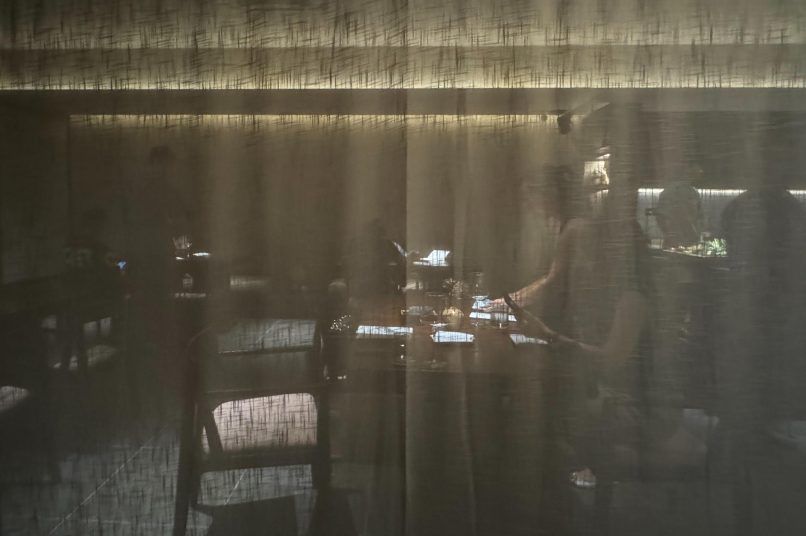
Once your table is ready to receive you, you will be whisked down a brief passage of time, which takes its name after a series of framed photographs of the Akâr Dining team from across four years lining one side of the wall. You can just about spy the dining hall through a literal veil, but the full impression of the space doesn’t reveal itself until the expanse yields in its entirety to reveal an open prep line island counter that segues into tables arranged well within sight of the action. Consider this a sophisticated take on American dinner theater, designed in reflection of nature by Studio TCH.
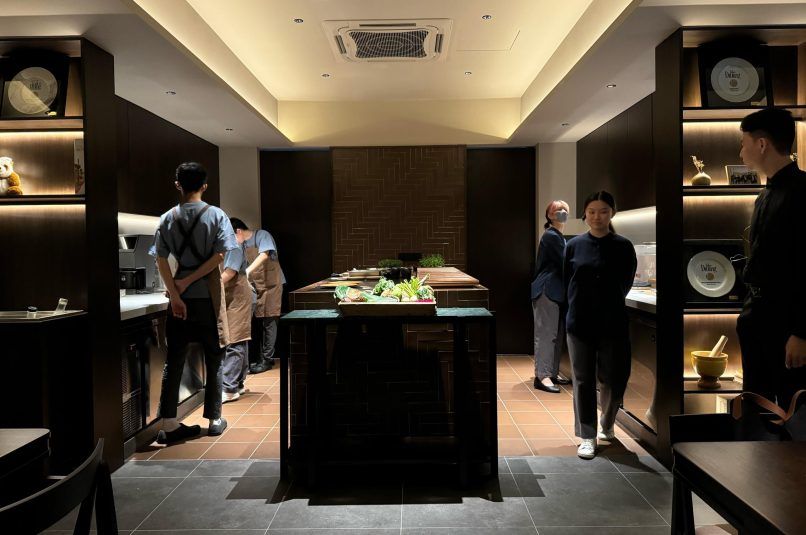
Seemingly in tribute to fertile soil, deep earthen tones pervade the decor, extending from walls to cushions, which cast an illusion of an almost subterranean experience as you settle in.
A 15-part commemorative menu of ardently beloved classics
Now, the food. In commemoration of the restaurant’s relaunch, a 15-part Mekar menu has been curated to honour some of the Akar Dining’s most beloved recipes. To that degree, repeat diners will recognise staples that typify the Akâr experience, such as clay pot dishes. But for newcomers, perusing through the succinctly mentioned tasting notes will provide reassurance in familiar culinary cornerstones. At least on paper, that is. This still is a haute gastronomy address, after all, so novelty is par for the course.
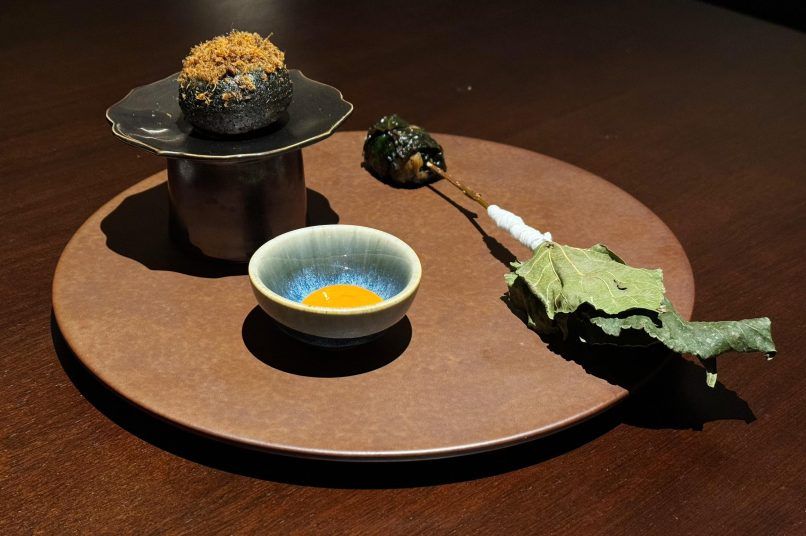
A sequence of three amuse bouche morsels cue the beginning of this degustation journey, starting with the coyly named X Dairy Cow. An aged beef fat emulsion derived from retired dairy cows is contained in a beetroot pastry shell and topped with pearls of Amur Caviar by Caviar Colony to create an upscale paitee, richly coating the tongue with salinity.
Then delight in the Prawn Pais, with dense bites of prawn flesh and glutinous rice tightly packed under mulberry leaves, best enjoyed with a dip of tempoyak (fermented durian) sauce. Rounding out the trifecta is an elevated dimsum classic, the egg custard bun, now taking the guise of a Breadfruit containing a moreish combination of salted egg jam and duck floss.
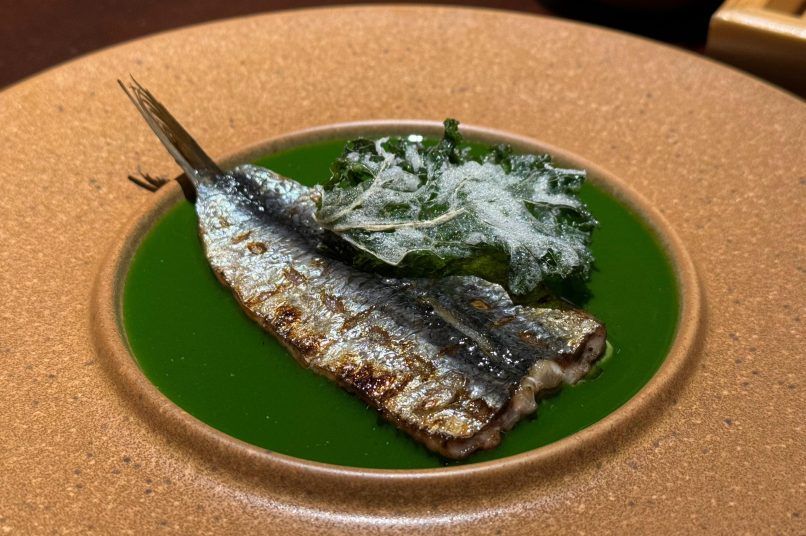
Your subsequent stops will delve into Malaysia’s seafront treasures, starting with strips of thinly sliced squid atop passionfruit jelly and cucumber, with a pipette’s drizzle of kesom oil. Texturally, ribbons of squid share much in common with agar, ever so slightly firm on first bite but otherwise pliant, marrying into tart sweetness from both the passionfruit and kesom, the latter of which is usually featured in assam laksa.
Hiroshima oysters are introduced as balls of ice cream served alongside lacto-fermented green sambal and a small crop of sea grapes. This one is more of an oddball dish that will take some adjusting to owing to the ice cream’s unexpectedly briney note, a facet further emphasised by the caviar-like sea grape orbs.
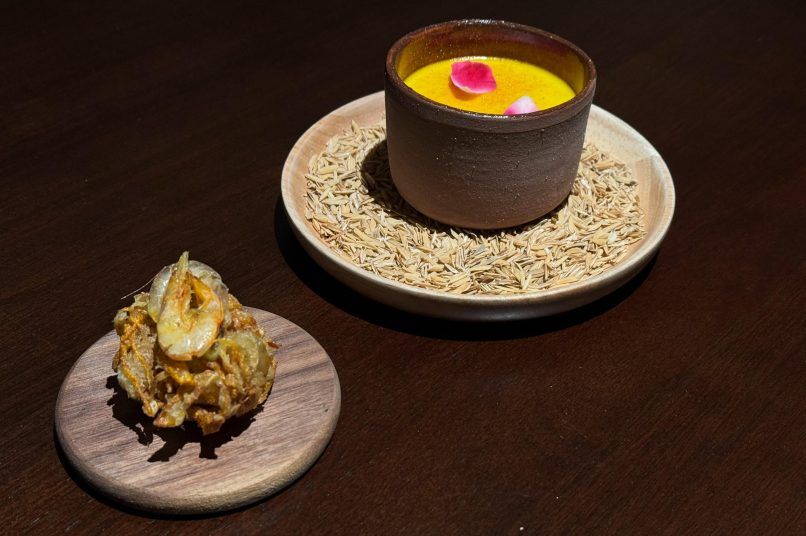
But the slipper lobster dish is universally adored, served in a deep cup containing layers of golden pumpkin espuma fragranced with rose oil, with a disc of white prawn pumpkin onion cucur (fried fritter). Have the cucur with the espuma or on its own; the sweetness of the prawns will do the rest justice all the same.
Then comes the abalone, packed in layers of jicama and eryngii mushrooms, with the former providing the necessary contrast from the consistency of mouth-feel that both the molluscs and mushrooms contribute in unison, underneath a wrap of betel leaf. One dish in particular is especially evocative of a Malaysian provenance — a deceptively simple chargrilled Japanese sardine that sits on a circle of viridescent liver sauce, garnished with rice-battered slivers of fried kale. The fish flesh flakes easily, introducing a smokiness to the palette that cleaves through an otherwise unctuous sauce.
A beacon of Akar Dining philosophy joining Nihon with Nusantata
Poultry also makes a rare appearance in Akar Dining by way of Cherry Valley aged duck from Penang, which is plated on a flat rice cake brushed with sand ginger marmite and doubanjiang (fermented chilli bean paste) sauce. Be forewarned, the rice cake carries legitimate spice. And don’t underestimate the sprigs of green garnish, as each one is deliberately chosen to evoke a different dimension of flavour when enjoyed with the duck, ranging from lemon marigold to wild ginseng.
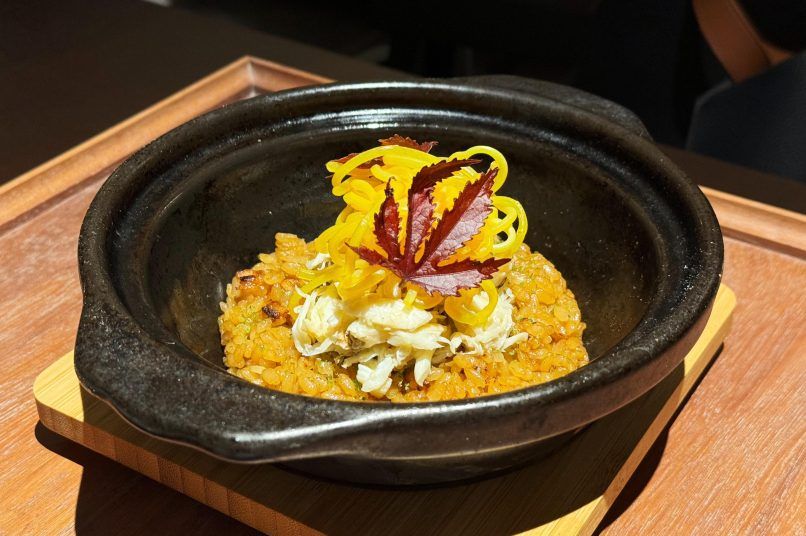
Savoury dishes culminate in a grand display of the Crab Claypot, which is tossed and served tableside using pearls of Koshihikari rice, mud crab flesh, stalks of egg yolk noodle, and cold-pressed Engkabang oil. Enjoy the first few spoonfuls dry to savour the heady fragrance of wok hei, before adding a drizzle of crab jus that enhances the crustacean’s minerality. In an artful reminder of its zero-waste principles, even the crab shells serve a purpose before decay: as a pedestal for your utensils.
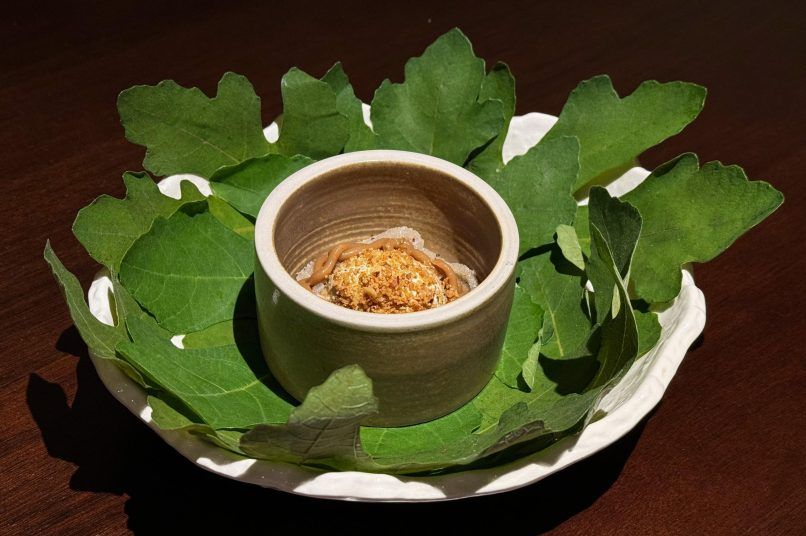
Sweet treats denote a curtain call in three parts, the first represented by a sprightly passionfruit curd reined in by sweet carrot sorbet and unexpected shavings of savoury oboru kombu shavings. The subsequent fig bouquet will impress in sight and scent, revealing itself from a fragrant plume of fig leaves where a glass crucible of guava jelly is presented, garnished using assam boi sugar and a shockingly appropriate ikan bilis crumble.
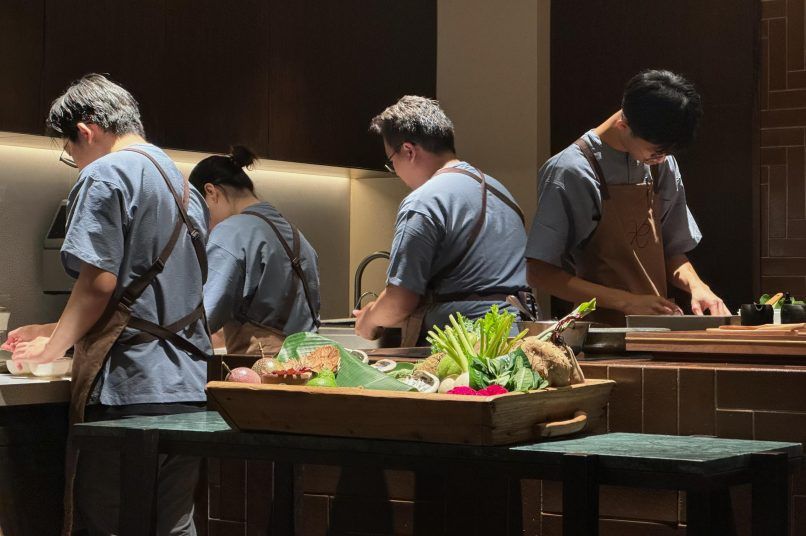
Mekar closes out on a properly Malaysian note with a petit four of kuih: an airy bite of kuih bahulu dusted with sansho sugar, a ball of green mango onde containing a kiwi apong filling, and a kuih sarang jemut. Wash it down with mulberry leaf tea, brewed in-house.
Priced at RM480++, the Mekar menu serves as a return to form for repeat diners of Akar Dining, while doubling as an elegant introduction to Chef Aidan’s approach in a fine culinary balance of Japanese influence with a Malaysian pedigree. For an added layer of immersion, speak to the in-house sommelier to add a wine-pairing experience at an extra RM300++.
Feature and hero image credit: Lifestyle Asia KL

